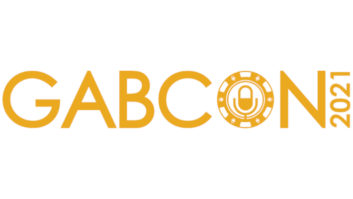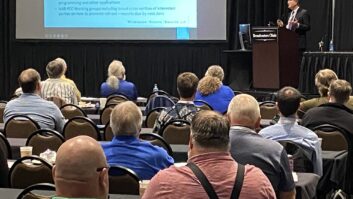WASHINGTON — Broadcasters are telling the FCC that current radio ownership limits inhibit their options for responding to changing market forces. For that reason, and because of increased competition, many stations — especially in smaller markets — are facing grave economic difficulties, they argue.
They want to see ownership limits reduced or eliminated. Regulators, they say, also should eliminate the “sub-caps” that limit how many stations in one service, AM or FM, an entity can own. Right now, in the largest markets (those with 45 or more radio stations), one entity can own up to eight stations and not more than five in one service.
Proponents say the current restrictions are outmoded and arbitrary, and that radio has tried to survive despite a deep recession and new threats like Internet radio in the car, where it once dominated.
Consumer groups generally oppose loosening radio’s restrictions. They say ownership consolidation that swept the industry after passage of the Telecom Act in 1996 hasn’t benefited anyone — neither broadcasters, who need to keep squeezing costs to shoulder the burden of ever-increasing debt loads, nor consumers, who get bland programming as a result of all that cost-cutting.
FCC commissioners are studying public comments as part of a media ownership review, the fourth such proceeding since passage of the seminal legislation 14 years ago. Comments to Docket 09-182 were due in July.
To say that these reviews of ownership limits are contentious would be an understatement. Two of the three since ’96 have resulted in orders relaxing one or more ownership rules. Currently, litigation arising from the 2006 ownership review order continues in a federal appeals court. It’s unclear how the timing of the pending litigation could impact the commission’s review process.
Related to ownership is the future of news media and journalism, which the FCC and the Federal Trade Commission have been considering as well. A draft FTC report mentions ideas such as a “national fund for local news,” paid for by taxes on broadcasters, consumer electronics companies and advertising. The FCC expects to issue its report on this topic by year-end, according to FCC Commissioner Meredith Baker.
Baker, a Republican, suggested in a speech to the National Religious Broadcasters in September that rather than a “bailout” or “quick fix,” the FCC should focus on revising its media ownership caps.
She said such “strict limits” may be outdated. “I encourage discussions about how we can better tailor our rules to the current media marketplace,” she said. It’s uncertain if her fellow commissioners will allow more deregulation. One, Democrat Michael Copps, has long been vocal against such changes.
Many who filed comments addressed both ownership limits and the future of journalism. What the commission says in the journalism report could signal how it will handle the ownership limits.
Most companies commented on television ownership limits or on the cross-ownership ban that affects newspapers, television and radio. A small portion of those commented on the radio ownership limits. Here are excerpts from those:
NAB: Critics Ignore Reality
Several executives contributed to the NAB filing. Topping the list was Jane Mago, its executive vice president of legal and regulatory affairs, who wrote:
The current local radio limits were established nearly 15 years ago in a less competitive marketplace, before the emergence of satellite radio, online streaming, and iPods and MP3 players.
According to numerous studies, common ownership of radio stations has produced greater programming diversity and has not significantly affected advertising prices. In light of the increasingly fragmented audio marketplace and the financial challenges facing local stations, especially during the recent severe recession, the commission should continue the process of relaxing the local radio restrictions. …
[O]pponents of reform ignore the effects that the emergence of innumerable online, as well as mobile, outlets have had on the advertising marketplace. Virtually no mention is made of shifting advertising revenues from traditional to online media, or the effects this shift is having on the viability of local stations and newspapers and their services to the public.
Indeed, to the limited extent that opposing parties acknowledge the recent economic conditions of broadcast stations at all, they merely claim that stations have experienced a cyclical downturn and are well on their way to economic recovery. …
These claims are at odds with reality. Although revenue projections for broadcasters are up for 2010, after very difficult years in 2008 and 2009, SNL Kagan projects that neither radio nor television station ad revenues will, even by 2019, recover to the level of ad revenues for broadcast stations in 2006. …
Opponents of reform would have the commission ignore these market changes, stating that “it is not the FCC’s responsibility to prop up the broadcast industry.” It is, however, the FCC’s responsibility to ensure that its own rules do not unnecessarily handicap local broadcasters by disadvantaging them in the marketplace and hindering their ability to compete against other outlets, including subscription-based ones.
Clear Channel: Higher Caps (if Any)
Clear Channel Communications Senior Vice President of Government Affairs Jessica Marventano offered this:
Even if the commission decides to retain local radio ownership rules in some form, despite the overwhelming evidence that no limits are necessary, it should at least modify the rules to reflect the reality of a transformed audio marketplace.
First, the commission should create two new ownership “tiers,” increasing from eight to 10 the number of stations a single entity may own in markets with between 55 and 64 stations, and from eight to 12 the number of stations that a single entity may own in markets with 65 or more stations.
Such a modification would have very limited impact, either in terms of geographic scope or broadcast radio ownership concentration in a market. Yet it would provide significant relief to group owners operating in the largest markets, where competitive pressures are the greatest, and such relief could manifest itself in improved public service and terrestrial radio technology to markets of all sizes.
Moreover, the establishment of additional ownership tiers would provide a desperately needed stimulation of transactions and capital for the broadcast radio industry. …
In 2006, Clear Channel owned 1,168 stations — or 8.5 percent of all licensed stations in the U.S. Today, however, Clear Channel owns 857 stations, or 5.9 percent of radio stations. The remaining 94.1 percent of stations are owned by thousands of companies and individuals, making the radio industry one of the least consolidated of the country’s major industries. …
Sirius XM has continued to make inroads in the auto market. … At the end of 2009, there were 27 million satellite radios installed in U.S. autos, of which only 11.6 million were active. This difference in installed vs. active devices gives Sirius XM new opportunities to “remarket” its services to non-subscribers and to buyers of previously-owned vehicles.
As such, satellite radio persists as a significant competitive threat to terrestrial radio, which, until recently, has been considered the platform that “dominate[s] the car.” This threat is exacerbated by the commission’s local radio ownership rules. While a single entity can only own eight stations in the nation’s largest radio markets, Sirius XM is able to transmit 300 audio channels into even the smallest radio market.
Levine: Lower, Not Higher
Saul Levine, president of Mt. Wilson FM Broadcasters, licensee of stations KKGO(FM), Los Angeles and KGIL(AM), Beverly Hills, Calif., told the FCC:
Reducing the caps locally and nationally is the only way to preserve meaningful competition. Leaving the caps as they now exist or raising the caps will further reduce the number of independent stations, further reduce the number of station owners, further reduce competition and further function as a catalyst for anti-competitive activity. …
Specifically, Mt. Wilson suggests that the current cap of eight stations in the largest markets be lowered to five stations, not more than three in the same service with comparable reductions in the smaller markets.
Entercom: Eliminate Subcaps
This comment is from John C. Donlevie, executive vice president and secretary, Entercom Communications Corp.:
[T]he subcap requirement is not supported by today’s broadcasting environment and can be an impediment to better utilization of the AM band. One of the reasons for the adoption of the subcap was to protect AM radio.
Whether or not this had any basis in the past, with the advances in technology over the past years that have improved the ability of AM radio to compete in the marketplace, there is even less validity to this position. These technological advancements include, among other things, online streaming, the implementation of HD technology and the ability for an AM station to use an FM translator to augment the broadcast of its signal.
AM radio does not need the protection originally intended by the subcap restriction. The fact that many of the top stations in large and small markets are AM stations, undercuts any argument that AM will flounder if the subcap was removed.
FMC: Opposed to Relaxing Limits
From Future of Music Coalition Policy Director Michael Bracy:
Only the few radio station owners with enough capital to buy additional stations benefited from deregulation. Station owners consolidated their operations on a local level, frequently running a number of stations out of a single building, sharing a single advertising staff, technicians and on- air talent.
In some cases, radio station groups have further reduced costs by eliminating the local component almost entirely. Using satellite feeds and regional content managers, some stations consist simply of a broadcast tower and a part-time technician who controls feeds from regional or national offices, rebroadcasting them to local audiences.
These group owners are benefiting from economies of scale, but what are the drawbacks? Local DJs and program directors have been replaced by regional directors, or even by voice-tracked or syndicated programming, explaining a marked decrease in the number of people employed in the radio industry.
Listeners are losing as well. With an emphasis on cost-cutting and an effort to move decision making out of the hands of local station staff, much of radio has become bland and formulaic.
Free Press: Resist These Overtures
Free Press Policy Counsel Corie Wright wrote:
[W]e urge the commission to resist industry overtures to further relax the multiple ownership limits, and to instead maintain or tighten current ownership limits to best promote the public interest goals of diversity, localism, competition, and efficient use of the spectrum. Companies that have made poor business decisions should not be rewarded with permission to engage in even more media consolidation that would further injure competition and diversity among local media outlets.
It is not the commission’s job to protect industry profit margins. It is the role of the commission to promulgate and enforce rules and regulations designed to promote competition, diversity and localism so that the public internet, convenience and necessity are served.
NABOB: Consolidation Hurts Minorities
James L. Winston, executive director and general counsel for the National Association of Black Owned Broadcasters, commented:
Consolidation of ownership in the broadcast industry has been a direct cause of the 40 percent drop in the number of minority companies owning broadcast stations. Any further relaxation of the commission’s multiple ownership rules would exacerbate the already dismal lack of minority ownership in the broadcast industry.
The commission should reinstate its “flagging” policy for identifying excessive concentrations of ownership in local radio markets, and require all assignment and transfer applications to provide information on the impact of the transaction on diversity in the local radio market.












